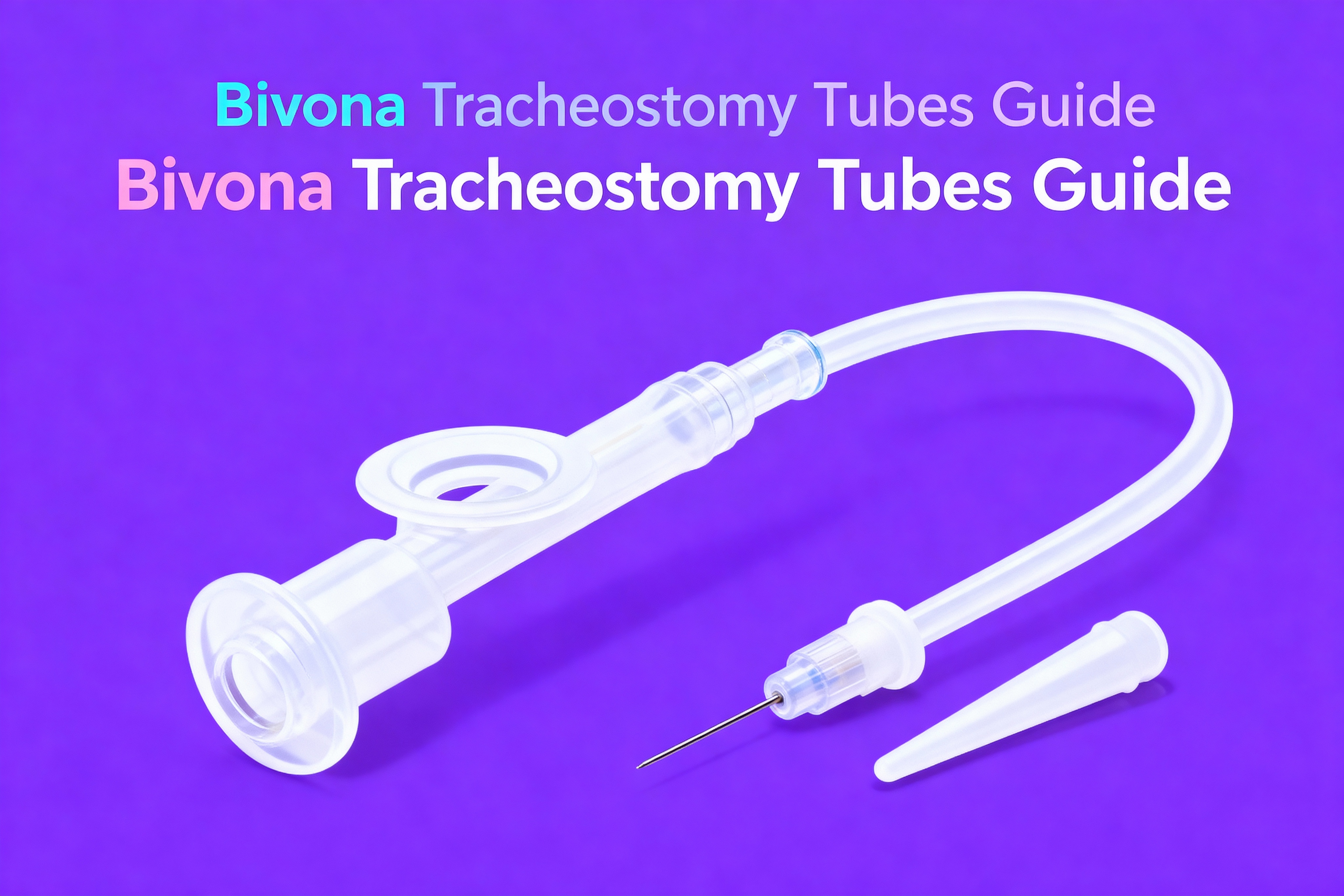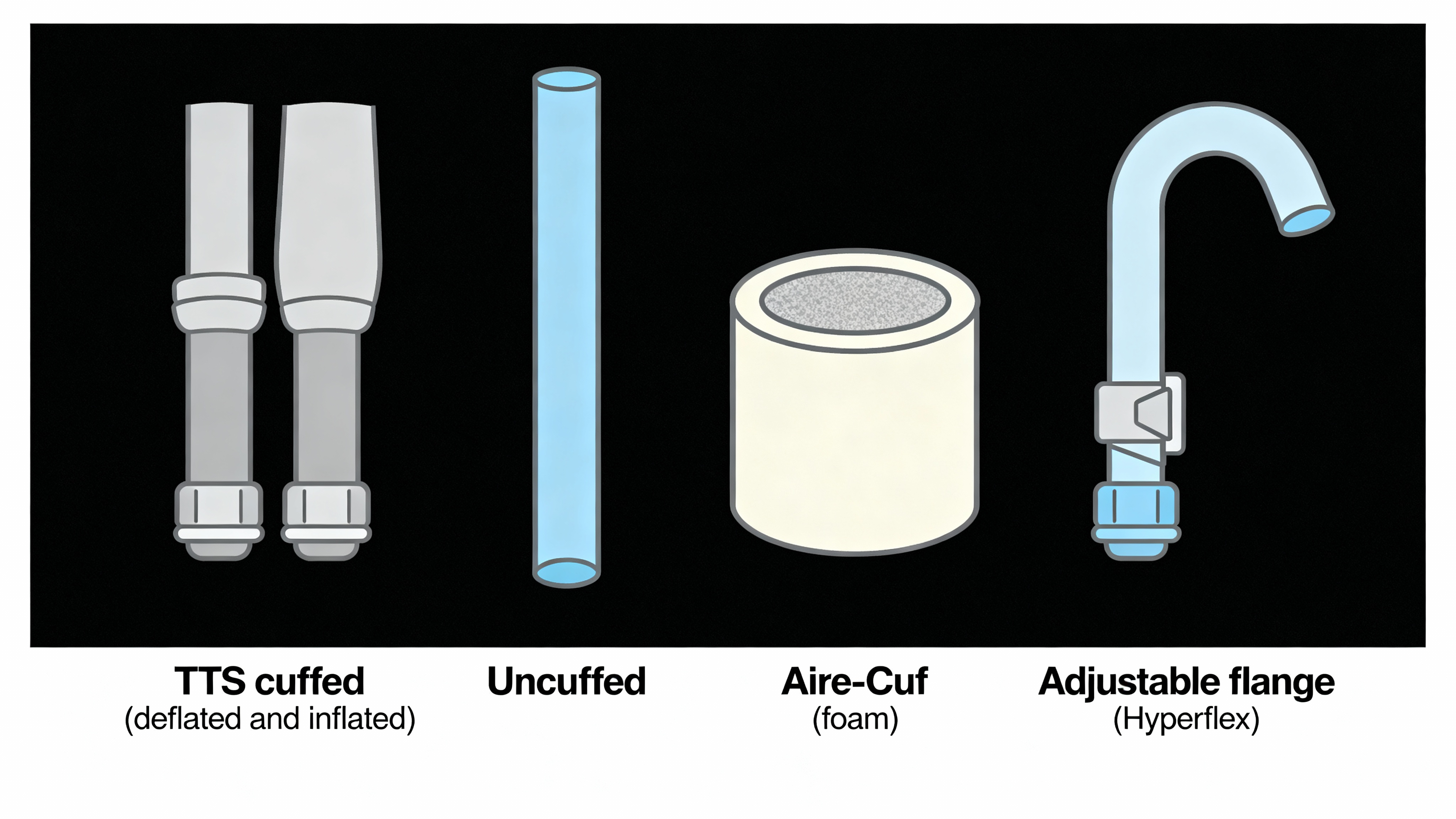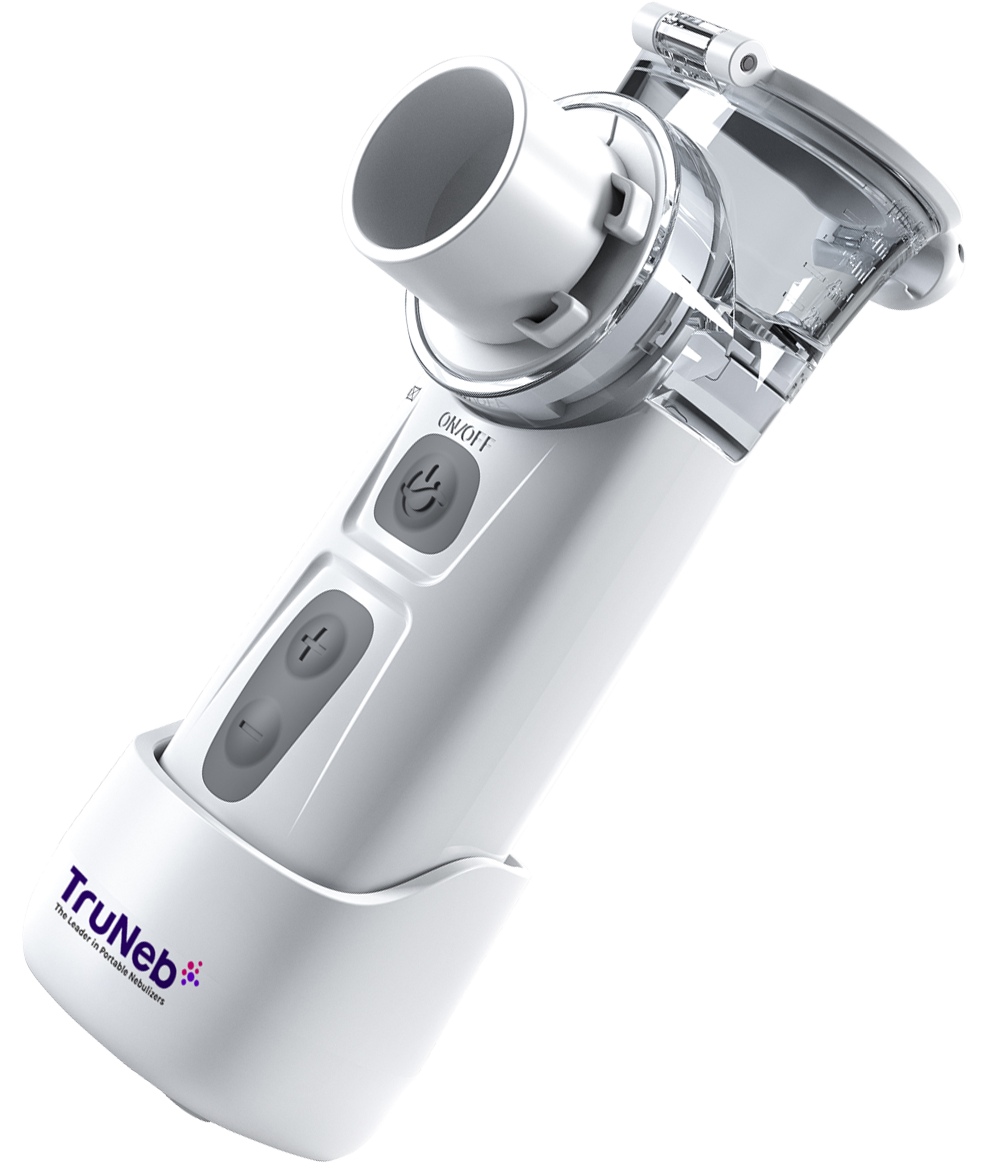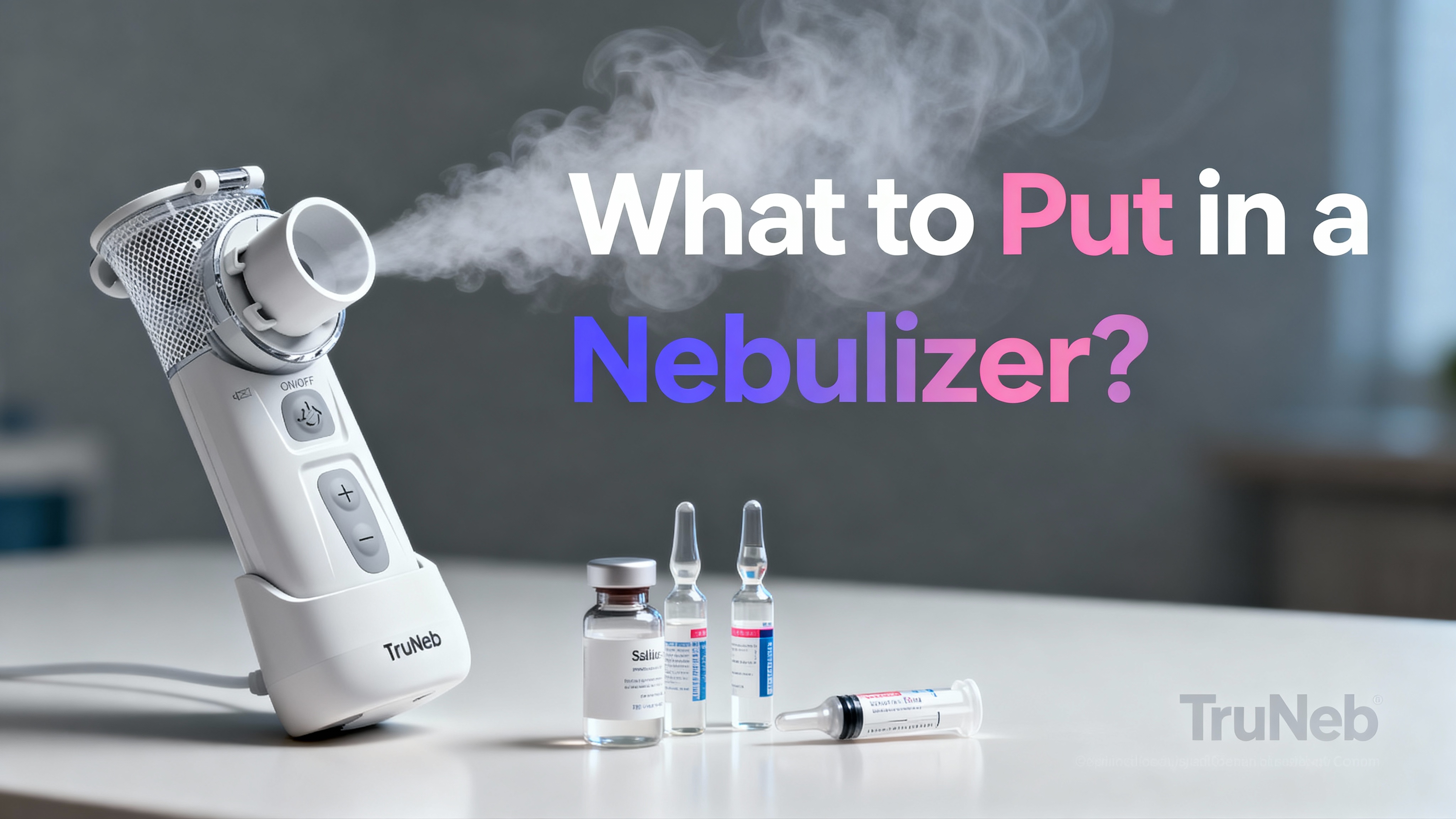On this page

What is a Bivona tracheostomy tube?
A Bivona tracheostomy tube is a soft silicone breathing tube placed in a tracheostomy (a small opening in the windpipe) to keep the airway open. Bivona is a brand in the Portex/Smiths Medical family, now part of ICU Medical. They’re soft, flexible, and designed to be gentle on your airway.
Key takeaway: Bivona trach tubes are soft silicone breathing tubes placed in a tracheostomy to keep the airway open.
Advantages of Bivona’s silicone design
- Soft and flexible: Silicone stays soft in the airway and can reduce irritation compared to firmer plastic tubes.
- Comfort for movement: It bends with neck and body movement, which usually feels better during daily activities.
- Durable and reusable: Most Bivona tubes can be cleaned and sterilized for reuse, up to 10 times per the manufacturer.
- Low-profile cuff option: Bivona’s TTS cuff (on certain models) lies tight to the shaft when deflated, so the tube acts more like an uncuffed tube until you need a seal.
Silicone bends like a flexible straw; rigid plastic doesn't.
Key takeaway: Silicone Bivona tubes are flexible, gentle on the airway, and designed for safe, limited reuse.
Types of Bivona tracheostomy tubes
Bivona offers several models to match different needs. All are silicone, but they differ by cuff and flange design.
Bivona TTS (tight-to-shaft) cuffed
- Inflatable cuff creates a seal for ventilation or aspiration protection. When deflated, it lies tight to the tube so air can pass around it for speech and weaning.
- Helpful if you need a cuff sometimes, but not all the time.
Bivona uncuffed (cuffless)
- No cuff at all. Offers maximum airflow, easy speech with a speaking valve, and is common in pediatrics or in stable long-term use.
Bivona Aire-Cuf (foam cuff)
- A foam-filled cuff that expands to form a gentle, continuous seal. It is used when a steady seal is needed or the trachea is irregular, and foam cuffs are generally not intended for speech trials.
Bivona adjustable neck flange (Hyperflex/FlexTend options)
- Sliding flange allows custom length from skin to trachea. Usually a wire-reinforced shaft resists kinking at extended lengths. Useful with unique anatomy or when extra length is required.
Diagram: Common Bivona tube types (TTS cuffed, uncuffed, foam cuff, adjustable flange).
Key takeaway: Pick the model based on seal needs (cuffed vs uncuffed) and whether standard or adjustable length fits best.

Sizing and selection
Trach tube size is usually measured by inner diameter (ID) in millimeters. Bivona lines come in neonatal, pediatric, and adult sizes.
- Neonatal and pediatric sizes usually start around 2.5–3.0 mm ID and increase by small steps.
- Adult sizes commonly range from about 6.0 mm to 10.0 mm ID.
- Adjustable neck flange (Hyperflex/FlexTend) models help when standard lengths do not fit well.
- If standard sizes do not work, the MyBivona Configurator allows custom build options with your doctor.
Note: Bivona tubes are single-lumen (no inner cannula), so the full ID is available for airflow. Your doctor selects the final size.
Key takeaway: Use the inner diameter that fits the airway, and consider adjustable or custom options if standard lengths don’t fit.
Cuffed vs uncuffed: how to choose
- Cuffed: Doctors use cuffed tubes for positive-pressure ventilation or high aspiration risk. The cuff can help seal the airway when needed.
- Uncuffed or fully deflated TTS: Typically used when you’re breathing on your own, practicing speech, or weaning.
- TTS for part-time use: Helpful for night-time ventilation and daytime speech when fully deflated.
- Foam cuff (Aire-Cuf): Used when a continuous gentle seal is needed. Foam cuffs are not for speech trials.
- Pediatrics: In younger children, uncuffed is common unless a cuff is clearly required. Pediatric TTS exists when a cuff is necessary.
Never use a speaking valve with an inflated cuff.
Key takeaway: Use a cuff when a sealed airway is needed; otherwise, uncuffed or a fully deflated TTS supports speech and comfort.
Bivona vs Shiley: key differences
The biggest day-to-day difference is single-lumen (Bivona) versus an inner-cannula system (Shiley).
| Feature | Bivona (silicone) | Shiley (PVC) |
|---|---|---|
| Material | Soft silicone; flexible | PVC; firmer |
| Inner cannula | Single-lumen (no inner cannula) | Often dual-cannula; removable inner tube |
| Cuff profile (deflated) | TTS cuff lies tight to shaft | Air cuff leaves some bulk |
| Reusability | Sterilizable; up to 10 reuses per manufacturer | Generally single-use/disposable cycles |
| Comfort | Gentler on tracheal tissue | More rigid; may irritate more |
| Reinsertion | Soft tube can collapse—use obturator | Firmer tube may be easier to guide back |
Note: Actual reuse depends on device condition and your facility’s policy.
Key takeaway: Bivona prioritizes flexibility and reuse; Shiley prioritizes rigidity and inner-cannula management.
Care and maintenance
- Keep the airway clear: Your doctor will show you how to suction the tube to keep the airway clear. Bivona tubes are single-lumen (no inner cannula), so routine suction and humidity help prevent plugs.
- Clean the skin (stoma) daily: Follow your doctor’s instructions. Change wet or soiled dressings and check the neck for redness.
- Cuff safety: Speaking valves and capping require the cuff to be fully deflated; ask your doctor to confirm your setup. TTS cuffs are typically inflated with sterile water. Confirm your fill medium and pressures with your doctor.
- Routine changes and reuse: Providers typically change trach tubes every 2–4 weeks in stable patients. Reuse is per manufacturer guidance, and hospital policy and the device’s condition determine actual reuse. Inspect for cracks or tears and replace sooner if damaged. Most teams recommend keeping a spare tube and obturator on hand.
- Storage: Keep spare tubes in a clean, dry place away from direct sunlight.
Note: For airway moisture or medicine delivery, a portable nebulizer like the TruNeb™ portable mesh nebulizer can be convenient at home. Talk to your doctor about the right setup.
⚠️ If you or your child has trouble breathing, blue lips or skin, severe bleeding, or the tube comes out and you can’t reinsert it, call 911 or seek emergency care immediately. Talk to your doctor if coughing increases, secretions change color or amount, or if the tube or flange shows cracks or loose parts.
Key takeaway: Daily suction, gentle skin care, safe cuff use, and timely tube changes keep Bivona tubes working well.
Safety update: 2024 FDA recall
In Sept 2024, certain Bivona neonatal, pediatric, and adult tracheostomy tubes were recalled because the securement flange could tear, which can lead to tube movement or unintended decannulation. This was a Class I recall (the FDA’s most serious level). Check lot numbers on the FDA notice or contact ICU Medical/Smiths Medical for guidance on replacements, and follow your clinician’s instructions.
⚠️ If breathing worsens or the tube becomes loose or dislodged, seek emergency care or call 911.
Key takeaway: In 2024, certain Bivona tubes were recalled for a flange defect—check your lot number and follow FDA guidance.
Frequently Asked Questions
Tap or click a question below to see the answer:
Bivona silicone tubes can be reprocessed up to 10 times when properly cleaned and sterilized. Follow your hospital’s policy and inspect for damage before each reuse.
Providers typically change trach tubes every 2–4 weeks in stable patients, but timing varies by condition. Change sooner if the tube is clogged or damaged.
TTS stands for tight-to-shaft. The cuff inflates for a seal and deflates flat against the tube so it functions like an uncuffed tube when not needed.
Bivona tubes are soft silicone and usually single-lumen (no inner cannula) with reuse potential. Shiley tubes are firmer PVC, often with an inner cannula, and are generally used as disposables.
Conclusion & disclaimer
Choosing the right Bivona trach tube and caring for it well can make breathing, speaking, and daily life easier. Work with your doctor on sizing, cuff use, and change timing.
Disclaimer: This article is for informational purposes only and isn’t a substitute for professional medical advice. Always talk to your doctor about your tracheostomy care, equipment, and treatments.







